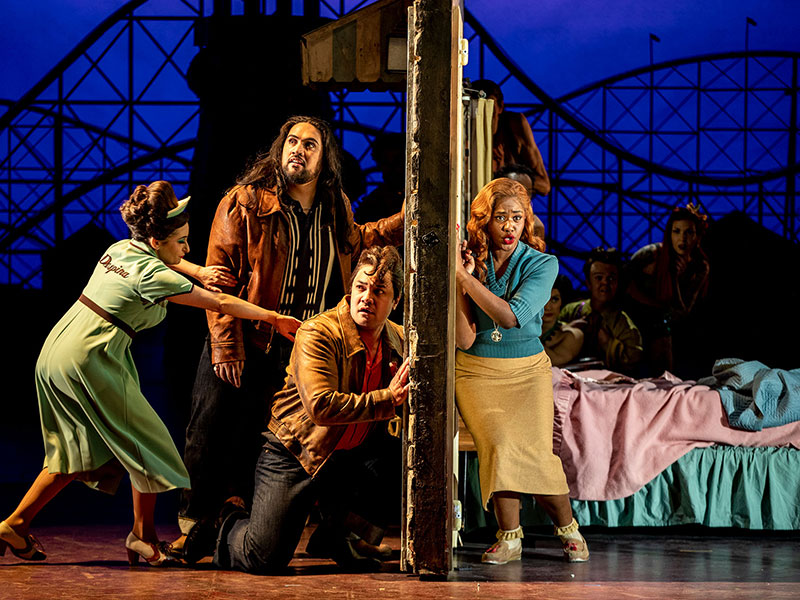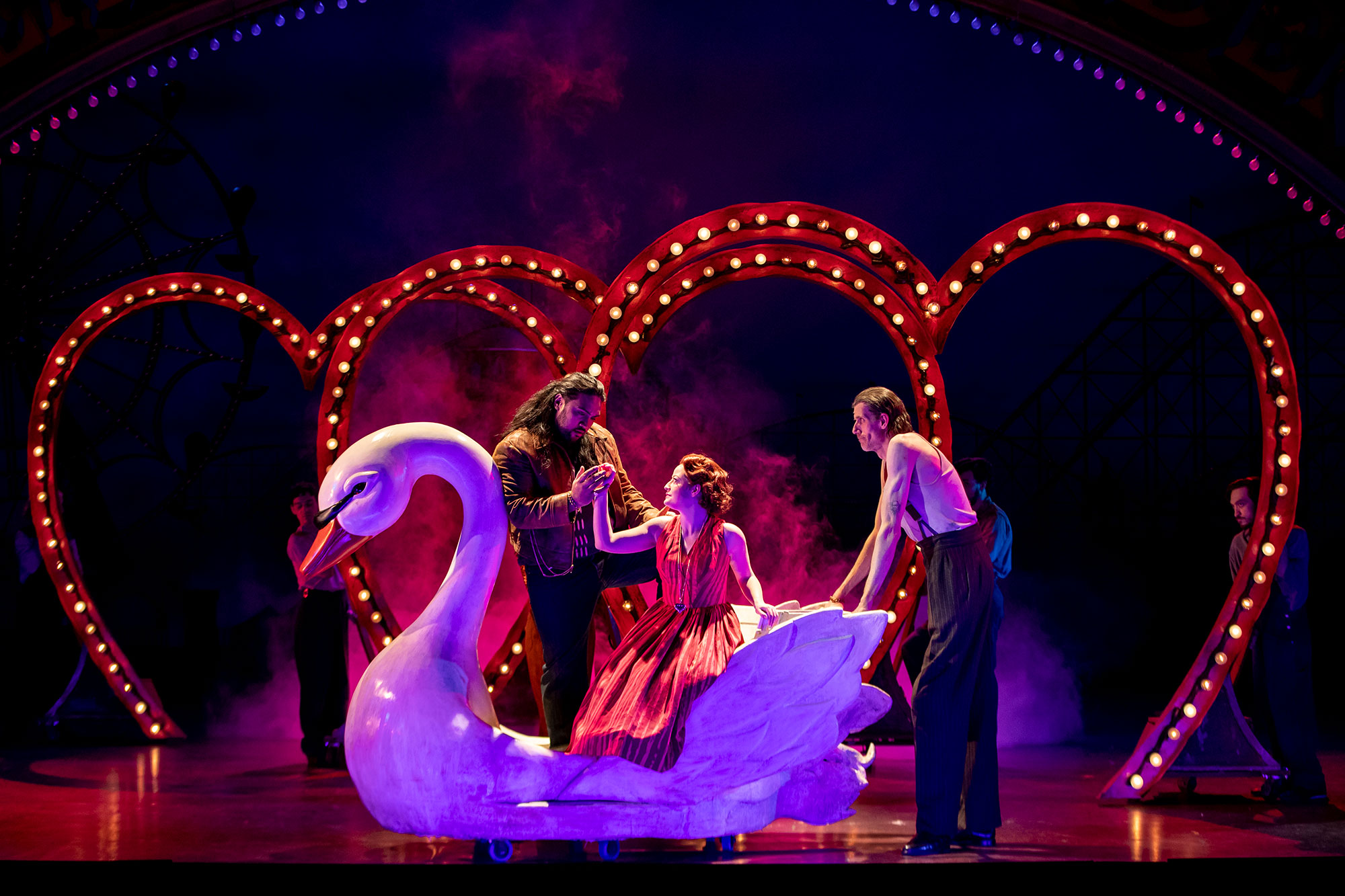Così fan tutte: Galleries & Videos








Così fan tutte Synopsis
Act I
Ferrando and Guglielmo are on holiday with their fiancées, sisters Dorabella and Fiordiligi, at the Skyline Motel near the Pleasure Garden. Late Friday night in a nightclub, their new friend Don Alfonso makes a bet with Ferrando and Guglielmo that the two sisters, like all women, are not to be trusted. The boys defend their fiancées and accept the challenge. Don Alfonso, with the boys’ co-operation, reckons he can prove his point over the course of the weekend.
On Saturday morning, the Don finds Fiordiligi and Dorabella strolling on the boardwalk, and tells them that their lovers are being called away to war. After saying goodbye and waving the boys off, the girls are inconsolable.
The next morning Despina, a maid in the motel, tries to encourage the girls to enjoy their freedom. Don Alfonso bribes Despina to help him introduce the sisters to two ‘infatuated young friends’ of his, who are in fact Guglielmo and Ferrando in disguise. The sisters are outraged, and refuse to listen to any declarations of love from the disguised boys.
Don Alfonso has another plan. The young men pretend to take poison in order to gain the sisters’ sympathy and Despina, disguised as ‘Doctor Magnetico’, revives them with her famous vibration machine. The sisters help Despina to revive the boys, who renew their flirtatious attack by demanding a kiss. Their advances are again refused.
Interval of 20 minutes
Act II
Despina chastises Fiordiligi and Dorabella for not knowing how to deal with men.
The sisters decide that perhaps Despina is right – there can be no harm in amusing themselves with the handsome strangers. They choose which man they’d like.
Don Alfonso brings the girls into the Pleasure Garden to meet the boys again. In the fairground, Dorabella responds quickly to the disguised Guglielmo’s advances. She accepts a gift and relinquishes her locket with Ferrando’s portrait. Fiordiligi, however, refuses to yield to Ferrando, although she admits to herself that her heart has been won. She condemns Dorabella for her betrayal and resolves to leave the Pleasure Garden and join Guglielmo, her fiancé, at the front.
Così fan tutte FAQs
Così fan tutte tells the story of two young couples whose relationships are playfully tested through a mischievous wager. The characters find themselves caught up in a tale full of clever disguises, amusing situations and unexpected twists. Through a combination of mistaken identities and romantic entanglements, Così fan tutte questions human emotions and exposes how vulnerable love can be.
Così fan tutte was written by Wolfgang Amadeus Mozart, an Austrian composer renowned for his beautiful, innovative and emotional music. Learn more about one of the most gifted classical composers of all time in our Beginner’s guide to Mozart.
The libretto for Così fan tutte was written by Lorenzo Da Ponte, a Venetian librettist who had collaborated with Mozart on several of his other operas (nicknamed ‘Da Ponte operas’ or ‘Mozart-Da Ponte trilogy): The Marriage of Figaro and Don Giovanni.
Così fan tutte was written by the composer Mozart in 1789 and early 1790. The delightful opera then premiered at the Burgtheater in Vienna, Austria, on the 26th of January 1790.
The meaning of Mozart’s Così fan tutte goes beyond its surface story of love and infidelity to explore deeper themes of human nature. Through its playful humour and sharp irony, the opera challenges societal norms and expectations about relationships, questioning ideas of loyalty and the true nature of love. It invites the audience to reflect on how emotions and choices are influenced by circumstance, making it as thought-provoking as it is entertaining.
“Così fan tutte” can be interpreted in different ways, but the most used translation is “so do they all”. The word “tutte” is the feminine plural, suggesting that the Italian phrase is referencing women. A more fitting English translation is “Women are like that” or “Females are the same”, perfectly capturing the playful tone of the opera.
The correct pronunciation of Così fan tutte is “Koh-ZEE fahn TOO-teh”, with the emphasis on the second syllable of “Così” and the first syllable of “tutte.” This phonetic guide breaks it down for English speakers, making it easy to say the title of Mozart’s iconic opera.


